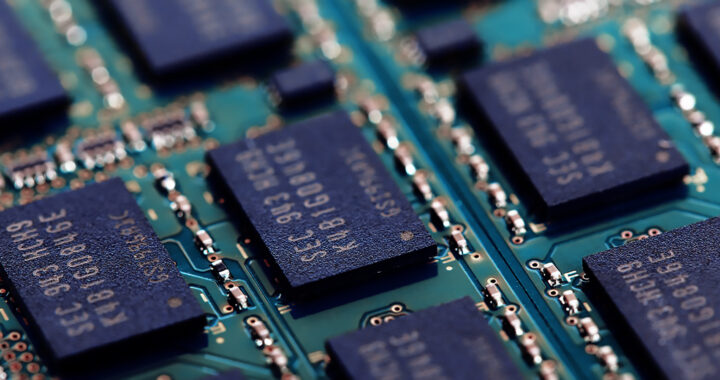Both Double Data Rate 4 Synchronous Dynamic Random-Access Memory and Double Data Rate 5 Synchronous Dynamic Random-Access Memory or DDR4 and DDR5 are variants of dynamic random-access memory and successors to the DDR2 and DDR3 SDRAM technologies. The former has gained a substantial foothold across different computing devices since it was first introduced more than a decade ago but it is now being replaced by the latter. Nevertheless, because both are still available in the market, a thorough comparison of DDR4 and DDR5 SDRAM technologies has become essential for several consumers mindful of their budgets and use-case situations.
Explaining DDR4 vs DDR5 SDRAM: A Comparison of DDR4 and DDR5 Dynamic Random-Access Memory Technologies
1. Backgrounds
DDR4 SDRAM became commercially available in the second quarter of 2014. Its non-error-correction code or non-ECC variant was introduced in the third quarter of the same year. It replaced the older DDR3 technology and provided higher data transfer speed, higher module density, and lower voltage requirements. It also allows for a Dual In-line Memory Module or DIMM of up to 64 GB compared to the maximum 16 GB per DIMM of DDR3.
The newer DDR5 SDRAM was released in July 2020. It features an increase in the maximum DIMM capacity from 64 GB to 512 GB on top of higher frequencies and wider bandwidth for better data transmission and improved overall performance. This newer SDRAM technology also has an on-die error-correction code. Prominent chipmakers like AMD and Intel have begun developing and marketing computer processors that support DDR5 SDRAM.
2. Size and Speed
Two of the most important points of comparison between DDR4 and DDR5 SDRAM are size and speed. The former has a typical memory capacity ranging from 4 GB to 32 GB per module. The maximum capacity per module can reach up to 64 GB in some higher-end configurations. It also operates at 1600 MHz to 3200 MHz frequencies. Some variants can be overclocked at 5000 MHz. The bandwidth ranges from 12.8 GB/s at 1600 MHz to 25.6 GB/s at 32000 MHz.
DDR5 SDRAM is bigger and faster than DDR4 SDRAM. It has a typical memory capacity ranging from 8 GB to 64 GB per module. The technology also supports modules with 128 GB to 512 GB memory capacity. The base frequency starts at around 4800 MHz with a bandwidth of 38.4 GB/s and can go up to 8400 MHz in several high-end variants. The better size and speed specifications of DDR5 SDRAM make it ideal for applications that require maximum performance.
3. Compatibility
Another important consideration when choosing between DDR4 and DDR5 is their physical and platform compatibilities. Take note that DDR4 modules have 288 pins and are designed to fit DDR4 memory slots on motherboards. DDR5 modules also have 288 pins but the pin layout and the position of the notch or key are different from DDR4. This means that it is impossible to insert a DDR4 module into a DDR5 slot. A DDR5 module would not fit into DDR4 slot by default.
Furthermore, with regard to hardware platform support, older generations of Intel and AMD processors released prior to 2021 support DDR4 SDRAM. The same is true for all motherboards released before 2021 and even several motherboards released before 2024 and targeted toward budget and mid-range market segments. DDR5 is supported in newer generations of Intel and AMD platforms starting from the 13th and 14th Gen Intel Core and AMD Ryzen 7000 series.
It is important to underscore the fact that a DDR4 SDRAM module cannot be used in DDR5 slots or with motherboards that only support DDR5 because of their physical difference. Older processors and motherboards do not support DDR5. This means that upgrading to DDRM would require a new motherboard and a compatible processor. There are newer processors, such as the 13th Gen and 14th Intel Core series, that support both SDRAM variants.
4. Availability and Price
DDR4 modules have been widely available for several years since 2014. This makes them widely available and mature in terms of manufacturing and supply chains. There is a vast selection of DDR4 modules available from various manufacturers and with a wide range of capacities, speeds, and price points. DDR4 is generally more affordable due to its longer tenure. This makes it a more cost-effective solution for budget and mid-range builds.
The availability of DDR5 has increased over time since it was introduced in 2020. It is still not as widespread as DDR4. The range of options is also expanding and these options will be as extensive as its predecessor by 2025 to 2027. It is still more expensive. The price gap between DDR4 and DDR5 has narrowed but the latter remains an option for premium builds. However, as it becomes more mainstream, availability will improve and prices will decrease over time.
Main Takeaways: Choosing Between DDR4 and DDR5 Dynamic Random-Access Memory Technologies
The main difference between DDR4 and DDR5 SDRAM is straightforward. The latter is the faster and better SDRAM technology that makes it ideal for modern computing. The difference is more pronounced in demanding use cases like multi-core workloads and multi-threaded applications like personal computer gaming, three-dimensional rendering, and video editing. It is still considered more expensive at the moment. Another issue is its incompatibility with older motherboards and processors released in the market before 2021 to 2022. However, as DDR5 SDRAM becomes more available, its price is expected to drop and it will become a default option for mainstream hardware platforms. Investing in DDR5 and compatible systems can provide better long-term compatibility and performance.
